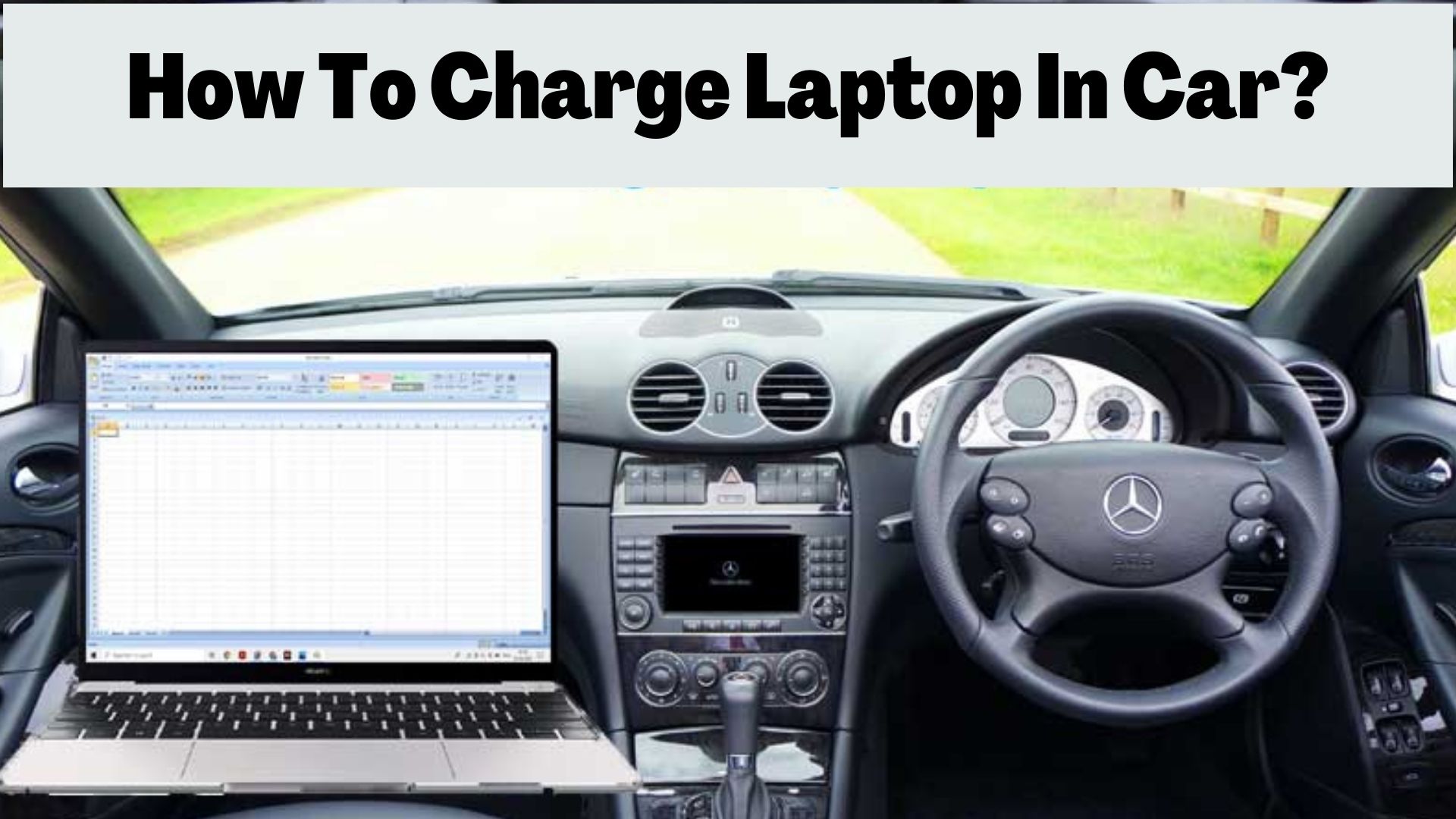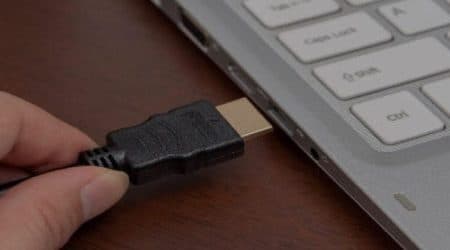


For many people, the ability to charge a laptop in a car has become an essential need particularly for those who frequently travel for work or leisure. Whether youre embarking on a long road trip or simply want to maximize your productive hours during a short commute, knowing how to correctly power your laptop using your vehicle’s energy source is imperative. However, charging a laptop in a car can potentially pose risks both to the device and the vehicle if not done appropriately.
Outlining the essential steps and precautions, we present to you a well-rounded guide for charging your laptop in a car without causing harm to your device or the vehicle. Understanding these processes and potential hazards can save you from costly laptop or car repairs down the line. Furthermore, it’s about getting the most out of your laptop’s battery life and functionality while on the move.
Equip yourself with knowledge on using car chargers wisely, picking out the right adapter, monitoring charging progress, and understanding both your car and laptops electrical mechanisms. To make the most of your laptop during long drives or to bridge the gap between office and mobile working securely, your journey starts here!
The Importance of Powering Your Laptop While on the Road
As we progress in this digital age, the functionality of our devices becomes increasingly critical to our daily activities. For modern day professionals, students or travelers, their laptop often serves as their office, study room, entertainment center, and main source of communication. Thus, keeping their devices powered up during long hours of travel becomes a necessity, sparking the need to understand how to power your laptop while driving in your car.
As opposed to the conventional use of electrical outlets to power your devices, sometimes circumstances may require you to resort to other options. You could be rushing a deadline for work while on a road trip or be stuck in a gridlocked traffic with a presentation in half an hour. Being able to power your laptop in your car would be paramount in such situations.
Moreover, modern cars are designed to act as a power source for a variety of devices. With a proper adapter, you can convert your vehicle’s energy into a reliable power source for your laptop. However, it’s not as simple as just plugging your laptop into the car’s adapter. Issues such as compatibility, safety, and potential damage to both your laptop and vehicle’s electrical system come into play.
Before you hastily journey through the path of in-car charging, you need a solid understanding of the process, safety precautions, and potential alternatives. Understanding how to power your laptop while driving in your vehicle effectively and safely is indeed an intriguing yet essential subject matter.
- Accept the challenge: Charging your laptop in the car could be a vital solution to stay productive during travel.
- Understand the potential difficulties: For successful in-car charging, you must comprehend factors such as compatibility and safety precautions.
- Learn and master the process: With correct information and equipment, your car could be transformed into a reliable power source for your laptop.
Difficulties Faced While Powering Up a Laptop Inside an Automobile
There is great convenience in being able to power up your laptop on the go while inside a car. However, this experience does not come without its challenges. Some of these complexities are related to compatibility issues between the car’s electrical system and the laptop. Other problems may relate to safety concerns, and prolonged charging periods.
Concerns with Compatibility
First and foremost, compatibility issues pose a significant challenge. Car cigarette lighters, which usually serve as the source of power, were not initially designed for charging laptops. Therefore, without the proper equipment such as a compatible power inverter, it might prove difficult to power up a laptop efficiently.
Safety-Related Challenges
Secondly, safety issues present another hurdle. Cars operate on DC power while laptops need AC power. If you attempt to charge your laptop without considering this fundamental difference, it might lead to overheating or sparks, posing a threat to your safety.
Long Charging Time
Lastly, one can’t overlook the problem of long charging periods. Unlike traditional electrical outlets that guarantee fast charging, car adapters may take a considerable length of time to fully charge your laptop. The charging speed may be even slower if the car’s engine is not running. This delay might prove inconvenient, especially when in a rush.
In summary, while charging your notebook in a vehicle is a brilliant idea that allows us to remain productive even on the go, it comes with its fair share of challenges. However, knowing these challenges is the first step towards finding efficient and safe solutions.
Understanding the Operation of Your Auto’s Electrical Network
To comprehend how you can power your laptop in your car without causing harm, it’s necessary to have an idea of how your automobile’s electrical network operates. The central element is the car battery, which supplies electricity to the entire electrical system.
The alternator’s purpose is to provide power to the electrical system and recharge the battery while the vehicle is operating. The alternator transforms mechanical energy from the engine into electrical energy in the form of alternating current, which is then converted to the more usable direct current.
The Role of Fuses and Relay Systems
In any car’s electrical system, fuses and relay systems play a crucial role. The fuses act as a shield to your electrical infrastructure, protecting it from overcharge and current surges that could potentially cause a fire or damage intricate parts. The relay system, on the other hand, moderates the power that flows into the electrical parts, helping to stabilize the electrical charge that goes into more sensitive electronics within.
Understanding how these elements function can significantly assist in safely charging a laptop in a vehicle. For instance, using a laptop charger with an inbuilt surge protector could help maintain the integrity of the car’s electrical system when the alternator’s current is high.
However, it’s also crucial to ensure that the power demand of your laptop does not exceed the power supply capabilities of the car’s electrical components. Always ensure to factor in the current drawn by other systems like the lights, audio system, and air conditioning while charging your laptop within the vehicle.
Therefore, understanding the functions and interplay of the various components in your car’s electrical system helps in creating a balance between your car’s power supply capacity and the additional power requirements of charging a portable device like a laptop.
Selecting the Most Suitable Laptop Power Adapter for Auto-Usage

Having a laptop in your vehicle can be extremely useful, especially when youre on a long journey or work on-the-go. However, maintaining the optimal battery level becomes a crucial consideration. It is paramount to select the most appropriate power adapter for your laptop that can be efficiently used in your car.
To determine the best charger, one should consider three vital factors: the voltage suited to your laptop, the model of your device and compatibility with the cars electric system. The charger should align with the cars DC output voltage without exceeding the laptop’s specifications.
Focused Factors to Consider
- Consistent Voltage Supply: Your laptop might malfunction or even get damaged if the power supply isn’t consistent. Therefore, ensure to choose a charger with a consistent voltage supply.
- Automobile Compatibility: Ensure that your car’s power outlet is compatible with the laptop’s charger. Newer models have USB-C chargers, but older ones tend to have traditional power outlet compatibility.
- Inbuilt Power-Surge Safeguard: This feature offers protection from abrupt power spikes while the car is running, thereby securing both your laptop and car.
- Laptop Model: Choosing a charger designed for your laptop model is better. However, in cases where this is not available, choose a universal charger compatible with your laptops voltage requirement.
Selecting a suitable laptop charger for car use requires careful consideration. While it offers a fine solution to keep your device powered up, incorrect usage or incompatible charger could lead to potential damages
Sustaining Your Laptop Power While on Lengthy Car Journeys
Long car rides can become more enjoyable and productive if we bring our laptops along. They can be used for various purposes like entertainment, keeping up with work or simply browsing the internet. However, keeping your laptop powered on an extended drive requires keen attention to safety precautions. The following tips will ensure that your laptop batteries stay charged without posing any danger.
Using Car Adaptors

To keep your laptop’s battery alive during your vehicle travel, using a car laptop charger, specifically designed for this purpose will be beneficial. This device comes with a plug perfect for your cars lighter socket. However, ensure that the voltage of the car adapter aligns with your laptop, as a higher voltage might damage your device, while a lower voltage will not properly charge it.
Also, it’s quite crucial to disconnect the charger once the battery is full. This aids in avoiding overheating which can be harmful to your battery’s health and overall laptop’s performance.
Maintaining Your Laptops Battery
Further ensuring the longevity of your laptops battery during your car travel entails practicing proper battery care. One key practice is minimizing the laptops brightness: more brightness means more power usage. Moreover, closing unnecessary applications that are running in the background can also cut down power usage significantly.
Battery Power Banks
In the event your car does not have a charging port, consider investing in a laptop power bank. They can hold up numerous charges for your laptop, thus providing you with sufficient battery life for your usage. However, like car adapters, remember to disconnect once charging is complete.
- Purchase a good quality power bank that has sufficient capacity to charge your laptop.
- Always keep it charged before starting your journey.
- Disconnect the power bank once your laptop is fully charged. This helps avoid overcharging which can damage the battery.
Ensuring your laptop’s power sustainably during those long drives can be both safe and efficient. By adhering to these safety precautions, you protect not only your laptops battery but also its performance in the long run.
The Significance of a Power Inverter When Powering Up Your Laptop During Road Trips
Providing secure and reliable energy to your laptop while on a road trip is critical. That’s where the power inverter comes into play. Essentially, an inverter is a device that converts the direct current (DC) electricity from your vehicle’s battery into alternating current (AC), which is what your laptop requires for its power supply. In the context of car charging, an inverter plays a crucial role.
However, like every other device, it is not without its risks and needs to be used responsibly. This is especially vital when it comes to safeguarding the health of your laptop and car battery.
How does an Inverter Work?
An inverter modifies the DC power from your car’s battery into an AC form that is compatible with your laptop. Your car battery provides 12 Volts DC output. The inverter makes the conversion and increases the voltage to 220/240 Volts AC, which is the standard for most home appliances, including laptops. Without an inverter, your laptop could not safely use the power from your vehicle’s battery.
It’s crucial to remember that while inverters provide a practical solution, they also require a fair share of power to operate. That being said, prolonged charging periods can occasionally deplete your car’s battery. Hence, using a power inverter calls for careful monitoring of your car’s battery status.
- An AC/DC compatible inverter assists in safe laptop charging
- For long trips, an inverter is an essential device
- Do mind the power consumption associated with inverter use
- Different inverters will cater to different power requirement needs of varying devices
Hence, while using inverters to charge a laptop in a car is an effective solution, doing so safely requires attention to the power limits of both your laptop and the car battery. Keep in mind that not all inverters are perfectly suited for every machine, so pick an inverter that matches your laptop’s power requirements.
Advantages of Employing a DC Converter for Powering up Your Portable Computer in Your Vehicle
For people on the go, the car offers a suitable place to keep electronic devices powered up. One of the key reasons to consider the use of a Direct Current (DC) Converter is the convenience it offers. Whether you are on a road trip, heading to a work meeting, or on a family outing, the luxury of having a power source readily available in your car to charge your portable computer can be a game changer. Plugging in your computer into the cars charging system ensures you remain productive and efficient while on road.
Another significant benefit of using a DC converter within your vehicle is power efficiency. By switching your laptop’s AC power to your car’s DC power, there are fewer energy losses compared to traditional ways of charging. Furthermore, it reduces the strain on your car battery, making it a more environmentally friendly choice.
Preserving Your Laptop’s Battery Life
Consistently using a DC adapter for your laptop in your car can protect and potentially extend your laptop’s battery lifespan. By ensuring the laptop consumes energy only when necessary and not straining its battery, you’re actively preserving its longevity. The DC adapter allows the laptop to operate through the cars power, allowing you to optimally use your device without depleting its battery.
- Convenience
- Power efficiency
- Protects and extends the laptop’s battery lifespan
The awareness and use of DC adapters for charging laptops in cars is expanding due to these mentioned benefits. They are easy to use, power-efficient, and considerably increase the battery lifespan of portable computers. In conclusion, a DC adapter offers an effective solution for charging laptops when conventional power outlets are inaccessible, particularly during car travel.
Important Safety Measures to Follow when Powering Your Laptop in Your Vehicle
Charging your laptop in your car can be a handy convenience, especially if you’re on a long trip or don’t have access to a traditional outlet. However, it’s important to remember to follow certain safety measures to protect both your laptop and your car’s battery from damage.
Tips for Safe Laptop Charging in the Car
- Use the Correct Adapter: Invest in a quality car charger designed specifically for your laptop model. Generic chargers may not deliver the right amount of power to your device, potentially leading to overheating or damage to the laptop’s battery.
- Be Mindful of Temperature Conditions: Extreme temperatures can impact your laptop’s performance and battery life. As such, never leave your laptop or its charger in the car on a hot day, and try to charge your device in a cool, well-ventilated area.
- Turn Off Unnecessary Applications: If you’re using your laptop while it’s charging, close any apps or programs you’re not using. This helps to conserve power and reduces the risk of overheating.
- Charge While Driving: If possible, try to charge your laptop while the car’s engine is running. This helps to prevent the car battery from draining, especially if you’re charging multiple devices at once.
While charging your laptop in your car can be a useful convenience, it’s vital to always prioritize safety. Keep these tips in mind the next time you need to charge your notebook on the go to ensure both your device and your car stay safe and in good condition.
Proper Way to Power Up Your Laptop While on the Road
When you are caught up in a situation where you need to power up your laptop but you are on the road, your car becomes an essential power source. However, there are some important steps to follow to ensure that you do it safely and correctly.
Preparing Your Laptop and Car
Before you begin, ensure that your car engine is running. This is to ensure that the car battery is not drained. It is also important to check if your laptop’s battery is in a good condition and that it is not overheating. An overheated battery can cause serious damage to both your laptop and car.
- Car’s Engine: Start your car engine. If the engine is off, charging your laptop might drain the battery of your car.
- Laptop’s Battery: Ensure that your laptop’s battery is not overheating. Always touch the bottom area of your laptop to check if it’s hot.
Using the Correct Charger
It is also of the utmost importance to use the right charger when charging your laptop in a car. Many laptops have specific power requirements and using a charger with the wrong voltage can damage your laptop. A car power inverter is often needed as most car power sockets deliver DC current while laptops require AC current.
- Car Power Inverter: Use a car power inverter to transform your cars DC current into AC current. It plugs into the car’s power socket.
- Check Voltage: Ensure that the car inverters output voltage matches with your laptops power requirement.
Plug in the Charger
Once everything is set, you can now plug the charger into your laptop. Wait for a few minutes to see if your laptop is charging. The indicator light should turn on. If not, unplug everything and check your connections.
Remember, it is not advisable to leave your laptop plugged in for too long to avoid overheating. Whenever you can, try to give your laptop a break.
Charging your laptop in a car is not something you should do regularly, but only when it’s absolutely necessary. Regularly charging a laptop in a car could shorten its lifespan. But if you follow the steps above, you should be able to do it safely and without destroying your equipment.
Charging Your Portable Computer in Your Vehicle: Common Pitfalls to Steer Clear Of
When it comes to maintaining your portable computer’s battery life, it’s crucial to steer clear of common myths and recognised mistakes. Charging a laptop in a car, if done incorrectly, could cause potential harm to your device; here are a few commonly made errors to avoid:
Using a Non-compatible Charger
An often overlooked aspect is the use of a non-compatible charger. Using a charger that is not compatible with your laptop can cause serious damage, potentially resulting in battery swelling and leakage. Always ensure that the laptop charger specifications match to prevent these issues.
Leaving Your Laptop to Charge Unattended
It’s generally not advised to leave your laptop in your vehicle to charge unsupervised. This is due to the fact that a laptop can overheat and potentially cause damage to the internal components. Remember that your vehicle can also heat up quickly, especially on a hot day, and this can contribute to further overheating – keep a close eye on your laptop when charging.
Charging from a Dead Battery
Another common mistake is trying to charge your laptop in your vehicle from a completely depleted battery. The energy requirements from a dead battery can cause an overload to your car’s power supply. It’s recommended to keep some amount of charge in your laptop’s battery before attempting to charge from your vehicle.
Overcharging Your Laptop
While newer laptops have a built-in mechanism to prevent overcharging, older models might not. Overcharging can cause your laptop’s battery to degrade faster, reducing its overall lifespan. It’s better to maintain thoughtful charging habits than to rely solely on laptop’s internal mechanism. Whenever possible, try to disconnect your laptop once it has fully charged.
- Prioritise using compatible chargers
- Never leave your laptop charging unsupervised
- Don’t completely deplete your laptop’s battery before charging
- Protect your laptop from overcharging
By avoiding these mistakes and taking a few safe charging measures, you can ensure healthier and longer battery life for your portable computer.
Common Queries About Safely Powering Up Laptops on Road Trips
Driving long distances no longer means being disconnected from work or leisure activities, thanks to advancements in technology. Utilizing your vehicle to power up your laptop has become a common practice. However, there are often queries about carrying out this task safely and efficiently. Replenishing your laptops battery in your vehicle is straightforward, but essential precautions should be taken.
Is it safe to energize my laptop in my vehicle?
Yes, it’s generally safe provided you utilize the right equipment and follow the recommended steps. You’ll need a specific car charger compatible with your laptop model, or alternatively, a power inverter that converts your vehicle’s 12V DC power into 110/220V AC power. Remember, selecting the right tools and following instructions is key to avoiding any damage to your laptop or vehicle.
Do I risk depleting my car battery? Draining your cars battery by powering up your laptop is usually not a worry, especially when the vehicle is running. However, if the engine is off, prolonged usage could potentially consume your vehicle’s battery. To avoid this, start the engine every hour or so to recharge.
Can I harm my laptop by charging it in the car?
Provided you use the appropriate charger or power inverter, the chance of harm to your laptop is minimal. Be aware, though, that using an incompatible charger can damage your laptops battery or motherboard. Always ensure the compatibility and power requirements before using the charger.
- What if my laptop’s battery gets hot? Heat is a byproduct of any charging process. However, if your laptop gets noticeably hot, unplug it immediately, let it cool down, and check if the charger is compatible and functioning correctly. Continued operation in a hot state can lead to severe damage.
- Can I use my laptop while it’s charging? Yes, you can use your laptop while it’s charging. However, doing so may slow down the charging process.
In conclusion, charging your laptop in your car can be as safe as doing it at home, provided you follow the recommended practices and use compatible chargers or power inverters
FAQ How to charge laptop in car:
Can I use a USB-C port to charge my laptop?
Yes, you can use a USB-C port to charge your laptop if your laptop supports USB Type-C charging. Ensure the power output of the USB-C charger is compatible with your laptop’s requirements.
What wattage is needed to charge a laptop via a USB-C port?
The wattage needed to charge a laptop via a USB-C port varies depending on the laptop model. Generally, a 45W to 65W charger is sufficient for most laptops. Check your laptop’s specifications for the exact wattage requirement.
Is it possible to charge a laptop in a car?
Yes, it’s possible to charge a laptop in a car. You can use a laptop car charger that plugs into the cigarette lighter socket or a car inverter to provide the necessary power to charge.
Are there ways to charge a laptop without using a standard charger?
Yes, there are several ways to charge a laptop without a standard charger, including using a power bank with USB charging capability, a car inverter, a USB charger, or a solar charger.
Can I safely charge my laptop using a phone charger?
You can safely charge your laptop with a phone charger if the charger has a USB Type-C port and delivers enough power for your laptop. However, charging might be slower if the phone charger has a lower wattage than your laptop’s original charger.
What is a car inverter and how can it be used to charge a laptop?
A car inverter converts the car’s DC power from the cigarette lighter socket to AC power, allowing you to connect your laptop’s power brick. This is a convenient way to charge your laptop in a regular car.
How can I use a power bank to recharge my laptop?
To use a power bank to recharge your laptop, ensure the power bank has enough power output and the correct port (like USB Type-C) to connect to your laptop. Some power banks are specifically designed with high wattage for laptop charging.
What are the methods to charge a laptop during travel?
During travel, you can charge your laptop using a portable battery, car inverter, USB charging ports available in vehicles or airplanes, or a solar charger. These methods offer flexibility when traditional power sources are not available.
Can I use a USB charger to start charging my new laptop?
You can use a USB charger to start charging your new laptop if it has a USB Type-C port and the charger provides adequate power delivery. Check the laptop’s specifications for compatibility.
What should I consider when looking for a laptop travel charger?
When looking for a laptop travel charger, consider its compatibility with your laptop’s charging port (such as USB Type-C), the power output, and whether it’s designed for portability. Additionally, look for safety features like overcharge protection to ensure safe charging.
How many watts do I need to charge my laptop?
The wattage required to charge your laptop varies depending on the model. Typically, laptops require between 45 to 90 watts. Check your laptop’s specifications for the exact wattage.
Can I charge my laptop through a USB port?
Yes, you can charge your laptop through a USB port if it supports USB Type-C charging, which provides power as well as data transfer.
Is it possible to charge a Dell laptop without its original charger?
Yes, you can charge a Dell laptop without its original charger by using a compatible USB Type-C charger, as long as the charger provides sufficient power for the laptop.
What should I consider when buying a charger for my laptop?
When buying a charger for your laptop, ensure it matches the wattage and connector type (like USB Type-C) required by your laptop. It’s also important to choose a charger from a reputable manufacturer to ensure safety.
How do I connect my laptop to an inverter charger?
To connect your laptop to an inverter charger, plug the inverter into a power source (like a car’s cigarette lighter socket), and then connect the laptop’s charger to the inverter.
Is it safe to charge a laptop with a USB Type-C phone charger?
It is generally safe to charge a laptop with a USB Type-C phone charger if the charger provides enough power for your laptop. However, charging may be slower if the charger has a lower wattage than your laptop’s standard charger.
How much power is required to charge a laptop with USB Type-C?
The power required to charge a laptop with USB Type-C varies, but typically it ranges from 30 watts for smaller laptops to 65 watts or more for larger laptops.
Can I connect the charger of another laptop to charge my laptop?
You can connect the charger of another laptop to charge your laptop if the charger has the same wattage, output voltage, and connector type (such as USB Type-C) as required by your laptop.
What do I need to charge my laptop in a car?
To charge your laptop in a car, you need a power inverter that converts the car’s DC power to AC power, or a car charger compatible with your laptop, typically through a USB Type-C port.
How can I tell if my laptop supports Type C charging?
You can tell if your laptop supports Type C charging by checking its specifications for a USB Type-C port with power delivery capability. Most modern laptops with USB Type-C support charging through this port.





